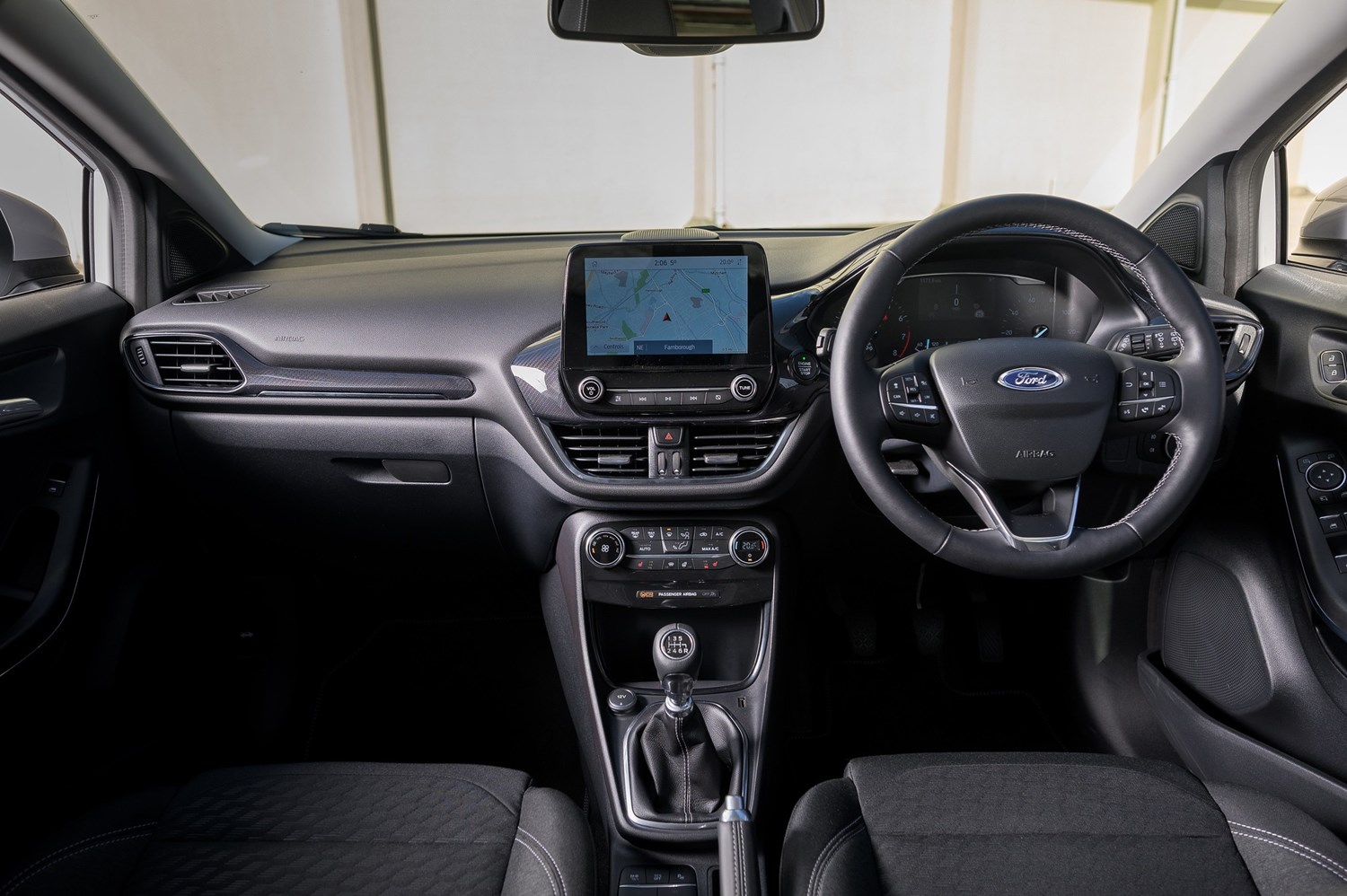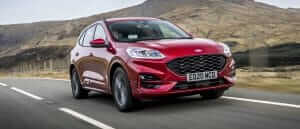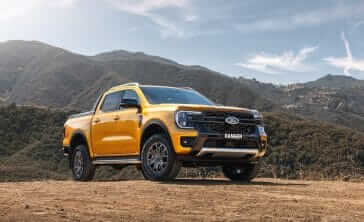Model review
You could be forgiven for being a little confused by the name of Ford’s latest compact crossover, which is designed to take on the likes of the Nissan Juke, Volkswagen T-Cross and Skoda Kamiq. Badged Puma, it shares the same name as the small sports coupe that was famously driven around San Francisco by a super imposed Steve McQueen in an award-winning ‘Bullet remake’ commercial back in the late ‘90s.
While the advert went down a storm, the car itself didn’t sell in huge numbers and in 2002 Ford pulled the plug. That was a shame because it was a really fun sports coupe that was also affordable. Fast forward 19 years and the Puma is back but in a very different guise, and while it has a completely different body shape you can still sense some of the sporty DNA from its namesake forebearer.
Current model
The 2020 Puma is quite a handsome beast in a class that’s littered with unusual and ‘quirky’ offerings. Much like the previous Puma, the latest model is based on the Ford Fiesta – much like the EcoSport, however it has a much sportier edge to it. Now that might raise a few eyebrows when you consider it’s taller and longer than the supermini, especially when the EcoSport isn’t exactly the most engaging machine. But Ford has put it in a package that actually works.
Where the Puma has a slight edge over some of the competition is the addition of mild-hybrid engines – something that’s normally reserved for more expensive offerings. That means it offers a good combination of sporty handling with a practical cabin and low running costs. You can see why it’s already proving to be a popular choice.
Value for money
The Puma isn’t cheap with models starting at £21,640, but the good news is that even basic models are well equipped. Standard models include 16-inch alloy wheels, rain sensing wipers, cruise control and an 8-inch touchscreen infotainment system with sat nav, Apple CarPlay and Android auto, plus wireless phone charging. It also features safety kit like lane keep assist and emergency braking. Because the Puma is still relatively new, used examples will be few and far between meaning prices are likely to remain high for the foreseeable future.
Looks and image
Like the Ford EcoSport, the Puma is based on the Fiesta, but it’s been given a much sportier and funkier look. Up front there’s a ‘happy’ grille that’s flanked by two slightly raised headlamps with LED daytime running lights. The headlights are somewhat reminiscent to those of the original Puma, too, in terms of shape. The body is also quite muscular in proportions with bulging wheel arches and body kit that really shows its sporty intentions.
The windows also look pretty narrow too, again giving it a sportier look despite its tall body stance. The roofline also has a coupe-like sloping to it and it really looks as if it means business – especially if you go for the higher spec ST-Line X which adds larger alloy wheels.
The dash is neatly laid out and clutter free, and the cabin materials are good quality for this price point. At the top of the centre console sits an eight-inch Sync 3 touchscreen infotainment system which is much improved compared to previous systems. What’s also new is the 12.3-inch digital dials system – something that helps to give the Puma a really upmarket and techy feel.
But where the Puma really stands out is behind the wheel. If you want a crossover that’s fun to drive, this Ford is a clear leader in this segment – being fun and involving and impressively nearly just as agile as the Fiesta hatchback. This sportier stance means the ride is a bit firmer than some of its rivals (especially on the large 19-inch alloy wheels), but it’s never uncomfortable.
Space and practicality
While the cabin looks pretty compact from the outside, thanks to those narrow windows and low roofline, you’ll find more than enough space up front. It’s not the biggest in its class but even six-footers won’t feel cramped. It is, however, a slightly different story in the rear where it can feel a little claustrophobic because of those narrow windows and rear legroom is compromised for taller people. If you need plenty of rear space, then we’d recommend looking at offerings like the Skoda Kamiq.
With the rear seats upright, the boot is a good size – 456 litres compared to the 422 litres in the Juke. You also get a large hidden underfloor storage which adds an additional 80 litres of room, and is waterproof and ideal for storing muddy boots, etc. The rear seats can be folded 60:40 as well to extend the boot space further. Be warned though, the load lip is pretty high, so it will make it slightly harder lifting heavier items in.
Engines
If you choose a Puma with a six-speed manual gearbox, you get the mild-hybrid system as standard. It’s available on Ford’s 1.0-litre EcoBoost petrol engine, which is available with either 123bhp or 153bhp. So, with only a 1.0-litre unit you might not be expecting blistering performance, but the range topping 153bhp model, with the help of a 48-volt battery, will do the 0-60mph dash in a more than respectable 8.5 seconds.
The hybrid system is particularly clever too as it can kill the engine when you’re coming to a stop to help when it comes to saving fuel. Think of it as a more elaborate stop start technology that helps to save fuel and provide additional torque – rather than being able to run on electricity like full hybrids can. Even the entry level hybrid will do the 0-60mph dash in under 10 seconds which is noticeably quicker than some of its rivals.
If you want an automatic version, a seven-speed gearbox is available on the 123bhp 1.0-litre petrol engine, though misses out on the mild-hybrid tech. There are no diesels available in the current line-up, and we’d be surprised if Ford introduced any, but a hot ST model is set to join the line-up at the end of 2020 with around 200bhp.
Running costs
Because the Puma is powered by a 1.0-litre petrol engine, running costs were always going to be low, but because there’s the option of hybrid power too this improves things considerably. The hybrids should return around 50mpg and low emissions of 127g/km of CO2.
Though no diesel option is available, these petrol engines should still be suitable for drivers covering a lot of miles.
Things to look out for
The latest generation Puma is relatively new with most of the tech unproven, however Ford has had a good record for reliability with the Fiesta. All Pumas will be covered under warranty until the end of 2022 at the earliest, which should provide additional reassurance.
Rivals
The compact crossover class is quickly becoming one of the most popular segments on the market.
Whereas a few years ago it was largely dominated by the Nissan Juke, there are now a range very strong offerings in this class – including the Seat Arona, Skoda Kamiq and Peugeot 2008.
Other rivals include the Toyota C-HR, which has styling as wild as the Puma and also offers economical hybrid powertrains. The Kia Stonic is worth considering if you like the idea of a longer warranty or the Audi Q2 if you can stretch your budget just a little bit further.
Depreciation
The compact crossover class is a highly competitive segment, so you’d expect depreciation to be low for the Puma, however because it’s well equipped and highly desirable it’s expected to retain a good portion of its value.





